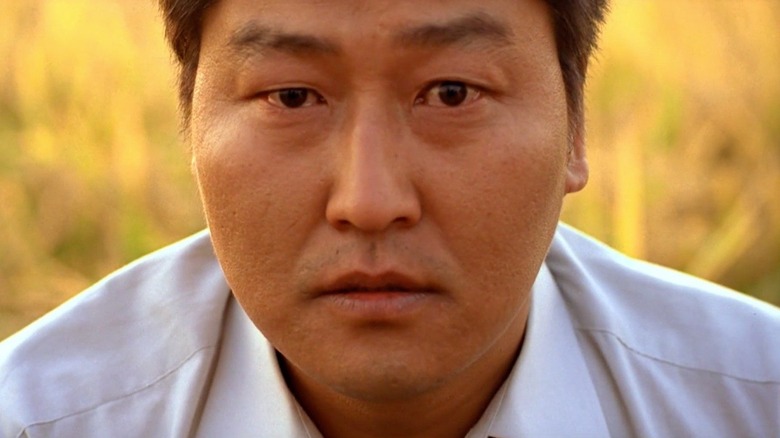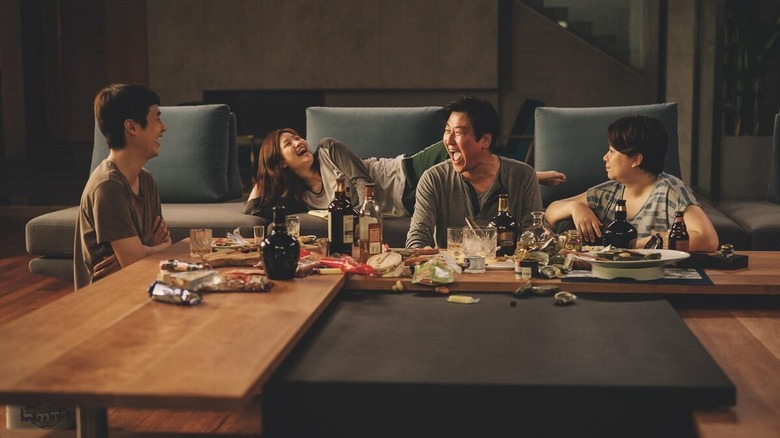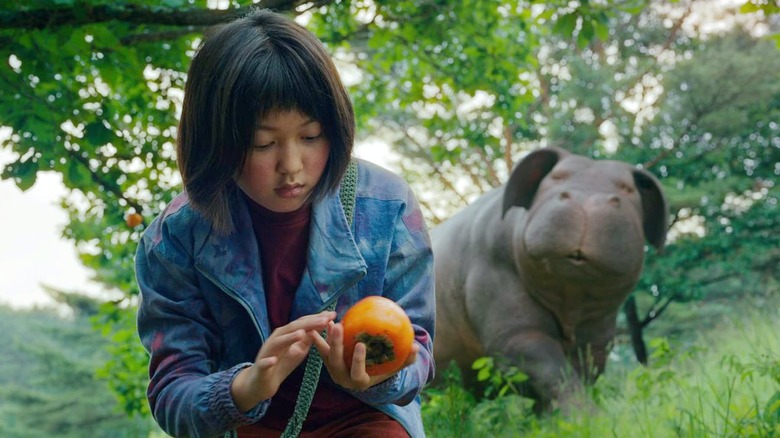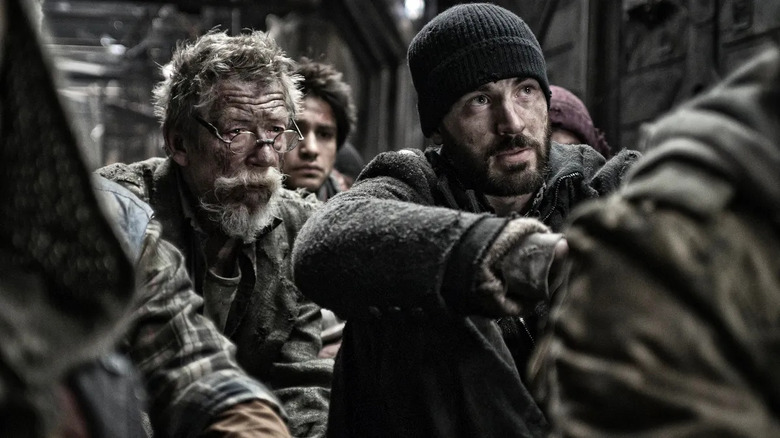When Bong Joon-Ho Is Behind The Camera, Nothing Is Left Up To Chance
At the end of many a Bong Joon-ho film, it's a common thing to be left feeling a little emotionally confused. From "Memories of Murder" to "Parasite," they always leave you reverberating with every emotion released throughout, making it hard to decide on the dominant sensation. Apart from Bong's tendency for ambiguous conclusions, the confusion is owed to the many idiosyncrasies that characterize his style. The director mixes black comedy, drama, and horror in ways that reflect the absurd but deeply affecting spirit of whatever story he's trying to tell.
Balancing drastic tonal juxtapositions and a penchant for eviscerating social commentaries would be an unwieldy task for a less organized director. But for Bong, it's become indelible to the way his movies lodge in the heart and mind. Every single one of his movies is rife with striking scenes. While they're sometimes devastating ("Memories of Murder"), sometimes heart-warming ("Okja"), his ending shots are always burned into the memory. The specific visual style of Bong's films precipitates from a meticulous but immensely helpful habit that place a huge reliance on storyboarding.
Bong's manga-like storyboards
In an interview with Vulture, Bong described how, starting with his second film "Memories of Murder," he began incorporating detailed storyboards with dialogue into his filmmaking process. Each one was sketched by the director to convey visually for both himself and the actors what he wants to capture in a particular scene. For the more elaborately bold sights seen in movies like "Snowpiercer," Bong enlisted other artists to help.
Steven Yeun, who worked with the director on "Okja," said the storyboards "were fully bound books" that looked "like mangas, where you're just like, 'Oh, this is the movie.'" For Bong there is also an organizational comfort to using the storyboards, as he explained:
"It makes me less anxious. Without a storyboard on set in the morning, it's like those nightmares where you're in the middle of Manhattan just wearing your underwear. If you have a storyboard, it feels like you're walking outside in clean, comfortable clothes."
Bong's obsessive dependence on the visual is perfectly surmised in Yeun referring to him as a "human animator." Because of the storyboards, the director essentially has a shot-by-shot understanding of what he needs: from location, to angle, to actor placement. For Yeun that meant when he was on set, Bong knew precisely where he would be standing — even going so far as to use stand-ins so the actor could see his perspective of the shot. It might sound a little like micromanaging, telling actors exactly where they need to be; though that hasn't been the experience of the stars who continue to work with the director. On the contrary, they credit Bong's concise and precise filmmaking style with being pretty freeing.
Bong's casts love his storyboards
Even though Bong's storyboards provide an exact vision that doesn't mean actors are boxed in and limited by them. "Some people get jarred by that because they don't like being told where to stand," Yeun conceded. "But when you see the frame, you're like, 'I know what we're achieving here.' You feel like a color."
Chris Evans, who also worked closely with Bong on "Snowpiercer," gave a similar analogy as reported by Collider: "It's like building a house and instead of needing a bag of nails, it is like saying, 'I need 53 nails.'" Tilda Swinton, a favorite of the director's for portraying his mad-cap villains, also gushed to Vulture about the "liberating" aspects of Bong's process.
"Not having any particular process myself, I find this method peculiarly liberating. It frees us all to fill the frame, albeit within precise boundaries, with energy and a kind of quick-bursting freshness. Director Bong is perpetually up for being entertained. It is a great feeling to amuse him."
By rendering his assembly of the film in exact images, Bong allows his actors more freedom to become the various "colors" that'll cover the canvas. At the Cannes Film Festival in 2019 longtime collaborator Song Kang-ho was quoted by The Korea Herald as saying that "in Bong's cinematic world, everything is calculated and sophisticatedly constructed." The actor, who's appeared in four of the director's movies including "Parasite," explained like Swinton that this "lifts the burden of actors who have to fully express the whole space and time in front of the camera." Bong's discipline in nailing down the specific parameters of his film means his actors — and everyone else on set — can focus on their jobs realizing his vision.
Bong's unusual cutting process
Another atypical piece of Bong's filmmaking methods? The director refrains from shooting multiple angles or perspectives, preferring the more expedient approach of shooting only what he needs. And thanks to his comprehensive storyboards he always has a visual map. But Bong's diligence is compounded by the fact that he also edits the footage as he's shooting it. Ed Harris, who plays the enigmatic antagonist Wilford in "Snowpiercer," mentioned the director's unique system of "cutting while filming" in an interview reported by Collider.
"If I was doing a scene and it was a couple of pages long, he would never shoot the whole thing one way. He'd shoot a few lines, like the first beat of the scene, and then he would turn the camera around and get my part for that part of the scene. Then he would change the angle a little bit."
Shooting like this keeps Bong from asking everyone to redundantly repeat scenes just to capture something they might end up not using. "That process allows him to fully control what the cut is going to be, and the result ends up being very original," explained "Okja" production designer Kevin Thompson. "He's not getting more than he needs."
And because of the immediate focus on editing, it doesn't take long to find out if they missed something or need to reshoot a scene. Meaning — and this seems to be a common theme — his actors can focus on playing their actors that much more organically. With all the horror stories one hears unfold behind the scenes involving over-bearing or bad-tempered directors, it's rather refreshing to know Bong is out there making magical films and still making it easy for everyone he works with while doing it.



